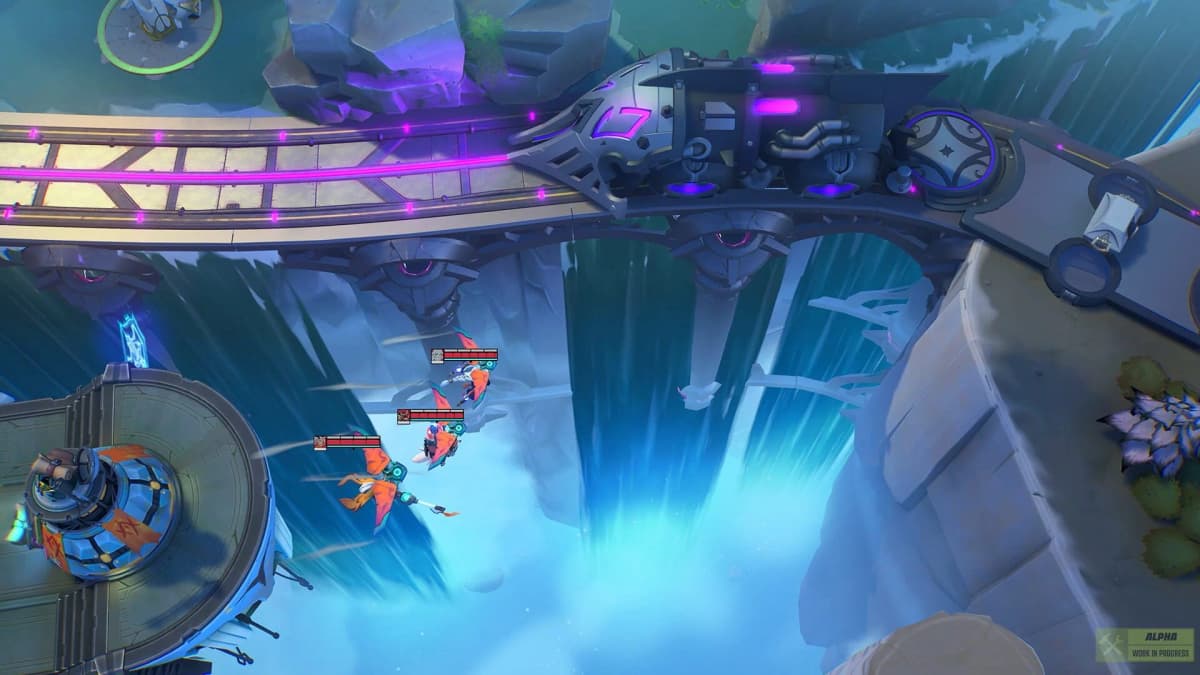
Game intel
Supervive
Jump, glide, shoot, punch, bounce, nuke, spike your enemies in this free-flowing, chaotic battleground in the sky. Face off in all-out, multi-squad teamfights,…
If you’ve tracked MOBAs (Multiplayer Online Battle Arenas) for years, you know how tough it is for a new title to break in. League of Legends, Dota 2 and Smite dominate the landscape with entrenched communities, polished esports circuits and massive budgets. So when Supervive—blending MOBA core with hero shooter gunplay and the last-man-standing drama of battle royales—emerged in Early Access, Steam piled on nearly 18,000 “Very Positive” reviews. Now, with its full 1.0 launch set for July 24, Theorycraft Games is asking: Could Supervive really carve a niche or even disrupt the status quo?
Traditional MOBAs revolve around two teams of five battling across lanes, destroying defensive towers en route to the enemy base. Supervive throws out that rigid laning system. Instead, you drop onto a free-roam map populated by weapon caches, shrines that grant buffs and neutral objectives that can swing momentum. Picture Apex Legends the moment you touch down: scramble for gear, coordinate with your squad and adapt to an ever-shrinking safe zone that keeps everyone on the move. Then layer in hero abilities—think Overwatch’s character roles but tuned for survival combat: tanks can shield allies, snipers hold perches for long-range picks, healers keep the group alive and stealth characters lurk in the shadows for surprise flanks.
Early Access has been a two-way street. Instead of locking players out of meaningful conversation, Theorycraft’s developers have hosted regular livestreams, detailed patch notes and open forums. Feedback-driven tweaks have already overhauled item balance, reworked a handful of overpowered heroes and refined the ring timer to reduce downtime. CEO Joe Tung—whose past credits include work at the studios behind League of Legends and Destiny—has emphasized transparency over marketing spin. The scheduled July 17 video deep-dive promises to reveal 1.0’s map layout changes, adjustments to the progression system and new anti-cheat measures. For veteran MOBA watchers, this level of developer honesty is as rare as it is welcome.
Obtaining coveted cosmetics and prestige titles can be a huge motivator. Supervive’s reward framework splits into two tracks:

Progression in Supervive is multi-layered. You earn experience both in match and across the season, unlocking hero mastery challenges and bonus loot drops. Seasonal rankings feed into a new competitive ladder, ideally setting the stage for future esports tournaments. For players who cherish visible status—“I fought in Season 0!”—these systems foster long-term investment.
No hybrid experiment comes without risk. Supervive faces three major headwinds:
Moreover, balancing gunplay and ability-based combat is notoriously tricky. A meta dominated by overpowered rifles might overshadow the strategic depth of hero skills, or vice versa. Maintaining equilibrium as new heroes and weapons arrive will require vigilant analytics and agile dev responses.

For seasoned MOBA devotees, Supervive represents a chance to break the lane-grind mold—shifting from pre-planned rotations to spontaneous, high-intensity encounters that reward situational awareness. Hero shooter fans will appreciate the direct gunplay, recoil control and dynamic sightlines. Battle royale enthusiasts gain the familiar thrill of “last team standing” but with added strategic layers: team compositions, map control and macro decisions aren’t optional; they’re essential.
Newcomers to competitive gaming can dip their toes in multiple genres at once. Rather than choosing between a pure shooter or a pure MOBA, they get a hybrid proving ground—ideal for discovering personal playstyles. Want to play a long-range sniper with a semi-auto rifle? Go for it. Prefer to charge in as a heavy support with a personal shield? That’s on the table too. This breadth may help Supervive attract diverse audiences who otherwise wouldn’t engage with a single-genre title.
The road to a thriving ecosystem demands more than a strong 1.0 release. Roadmap items Theorycraft has floated include:”);

If these come to fruition, Supervive could evolve from a curiosity to a fixture in both casual and pro circuits. Developer responsiveness will be the lynchpin: rapid bug fixes and meaningful engagement can differentiate Supervive from studio silos that vanish post-launch.
Supervive 1.0 isn’t guaranteed to dethrone the MOBA titans, but it’s tackling the genre’s most persistent criticisms—static laning, slow pacing and distant developers—by injecting battle royale urgency and shooter fluidity. The July 24 launch marks a critical litmus test: can Theorycraft sustain momentum, expand platforms and refine balance fast enough? If so, Supervive could claim its own corner of the competitive gaming world, appealing to veterans craving novelty and newcomers seeking a one-stop, high-octane experience. Keep an eye on that July 17 dev update and, if you’re feeling bold, snag those OG cosmetic tags before the next wave of players floods in.
Get access to exclusive strategies, hidden tips, and pro-level insights that we don't share publicly.
Ultimate Gaming Strategy Guide + Weekly Pro Tips